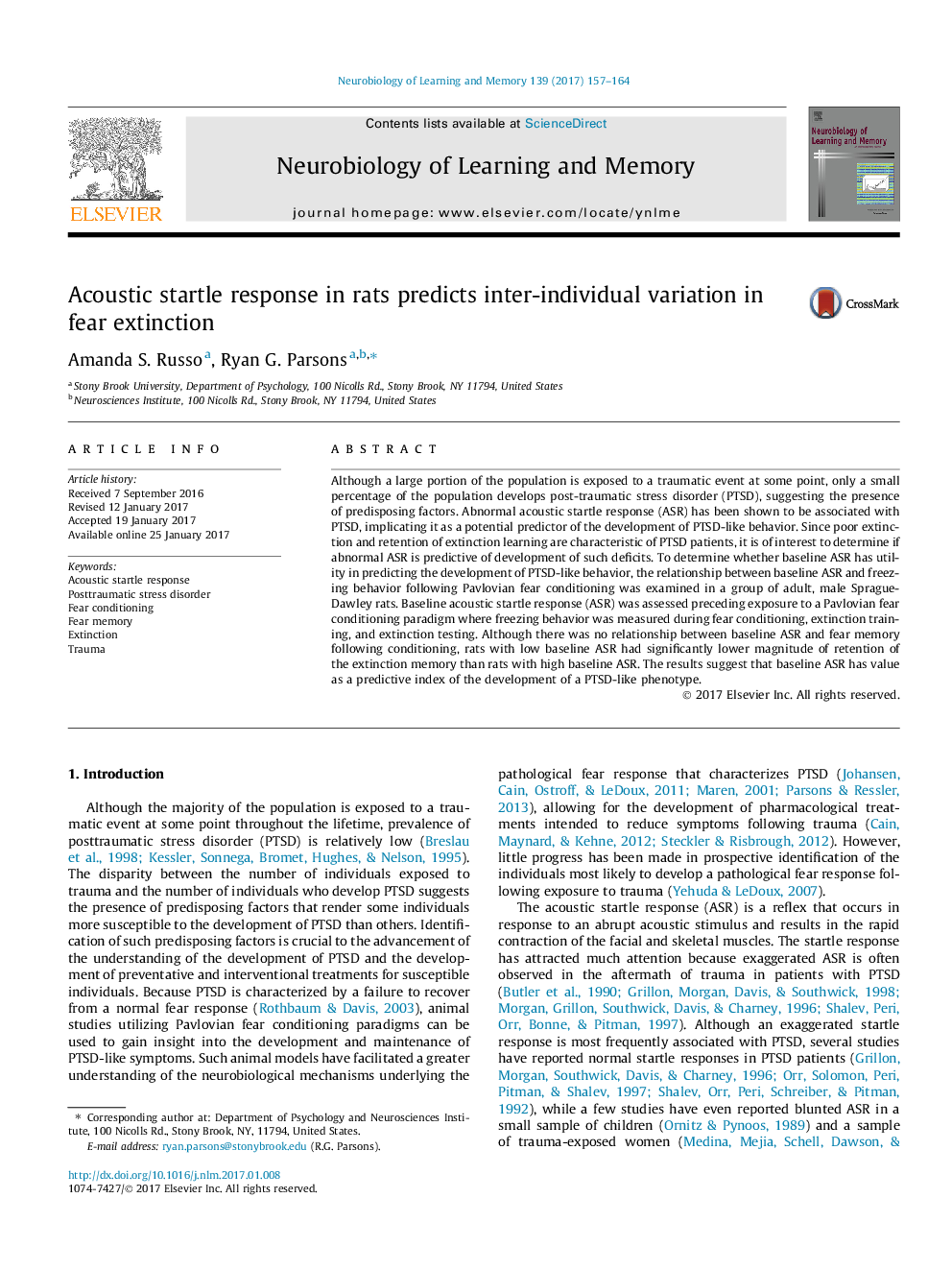| کد مقاله | کد نشریه | سال انتشار | مقاله انگلیسی | نسخه تمام متن |
|---|---|---|---|---|
| 5043302 | 1475135 | 2017 | 8 صفحه PDF | دانلود رایگان |
- Sprague-Dawley rats display trait-like inter-individual variation in baseline ASR.
- Low baseline acoustic startle amplitude is associated with poor retention of fear extinction.
- Retention of fear extinction can be predicted by baseline acoustic startle responses.
Although a large portion of the population is exposed to a traumatic event at some point, only a small percentage of the population develops post-traumatic stress disorder (PTSD), suggesting the presence of predisposing factors. Abnormal acoustic startle response (ASR) has been shown to be associated with PTSD, implicating it as a potential predictor of the development of PTSD-like behavior. Since poor extinction and retention of extinction learning are characteristic of PTSD patients, it is of interest to determine if abnormal ASR is predictive of development of such deficits. To determine whether baseline ASR has utility in predicting the development of PTSD-like behavior, the relationship between baseline ASR and freezing behavior following Pavlovian fear conditioning was examined in a group of adult, male Sprague-Dawley rats. Baseline acoustic startle response (ASR) was assessed preceding exposure to a Pavlovian fear conditioning paradigm where freezing behavior was measured during fear conditioning, extinction training, and extinction testing. Although there was no relationship between baseline ASR and fear memory following conditioning, rats with low baseline ASR had significantly lower magnitude of retention of the extinction memory than rats with high baseline ASR. The results suggest that baseline ASR has value as a predictive index of the development of a PTSD-like phenotype.
Journal: Neurobiology of Learning and Memory - Volume 139, March 2017, Pages 157-164
